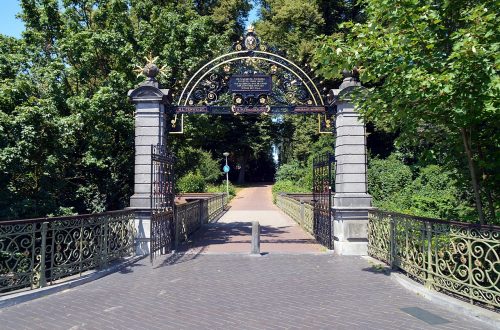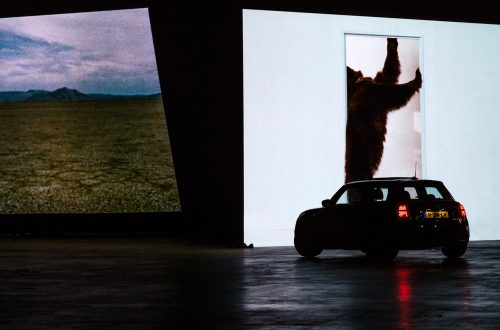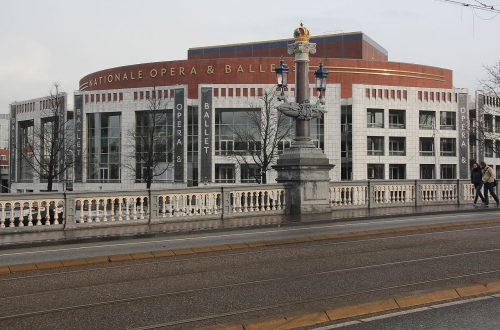
Whatever’s possible – A growing museum against the odds (Amsterdam, The Netherlands)
In order to combat the cultural exclusion the lockdown created, Museum Het Schipcame up with a highly intimate way of keeping their public close to them. After two years of hard work, the just-opened exhibition ‘Bruno Taut – Beyond Fantasy’ could only be visited for six days before the museum had to close its doors. Instead of moving their exhibition online they offered guided digital tours for one or two people at the time, keeping up with their tradition of dialogue while presenting what the museum had to offer.
Though small, the museum proved to house creative and involved staff members who did everything they could with what they had, and as a result they never lost their relevance and relationship with everyone who holds the museum close.
Background
Museum ‘Het Schip’ (The Ship) is located in west Amsterdam and focuses on the renowned architectural- and art form ‘Amsterdamse School’. It is situated in the quintessential building popularly called ‘The Ship’ because of its shape and decorations, designed by the artist/architect Michel de Klerk and built in 1921, back when its purpose was to house the working-class.
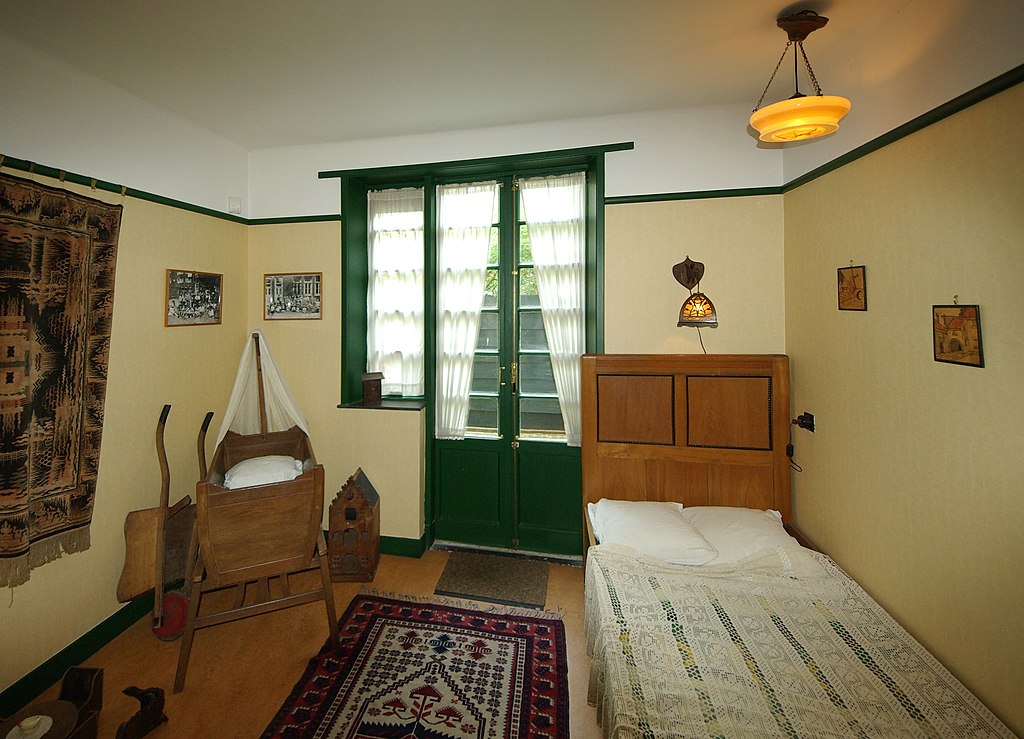
In 2001 a museum for the building and its architectural marvel was founded in the old post office that closed in 1999. Back then the museum consisted of only a few rooms, but steadily grew after its 2014 addition of the building ‘De Dageraad’ (The Dawn) located in south Amsterdam and the expansion of the original museum in 2016 after the closing and renovation of the school, situated in the same building. Ever since the museum has become larger, it grew in other ways, too: their organisation got bigger and the number of employees have gone up- and with it their ambition.
Museum Het Schip prides itself on their intimate approach, building relationships with its audience and its extension to the architecture outside their walls. Not only do they offer a complementary guided tour around the building with the purchase of a museum ticket, they also offer a range of tours (on foot, by bike, bus or boat) around- and outside of Amsterdam. In this way they can include all that the Amsterdam region has to offer and with it a complete view of the region’s history regarding the Amsterdamse School.
In 2020 the museum had 11 staff members, 45 public workers and 25 guides. They also had 10 specialized volunteers, spread out over the disciplines Education, Archives, Collection and Marketing & PR. The museum got its funding from both national (ex. Mondriaan Fonds) as regional (ex. Stadsdeel West, Amsterdam). As their public revenue declined they also received funds from the government fund NOW (an emergency fund for covering employment costs) and from Kickstart Cultuurfonds (a collection of several funds coming together to help the cultural sector during the Corona crisis).
Description
Five days before the lockdown, the opening of an exhibition was celebrated in Museum Het Schip. It was an exhibition centered around the architect and all-round artist Bruno Taut. Sadly, on the 15th of March the museum had to be closed indefinitely because of the Coronavirus. But the museum bounced back, announcing on the 29th of March that they were giving private digital tours of the exhibition.
At the time, the museum described seeing other museums hauling their exhibitions over to the digital platform, mainly consisting of pre-existing photos and other material.1 Completely in line with their vision on how Museum Het Schip should operate, they decided that the individual relationship with potential visitors were important to uphold. So instead of moving their collection to an online platform, they moved their concept. With a one on one (or one on two) virtual tour the museum was able to keep the conversation with their audience about their collection going in a highly individual format. These digital tours were given through multiple possible platforms (WhatsApp, FaceTime or Zoom) and consisted of a 20 minute walk through the exhibition by a guide with room for questions and conversation.
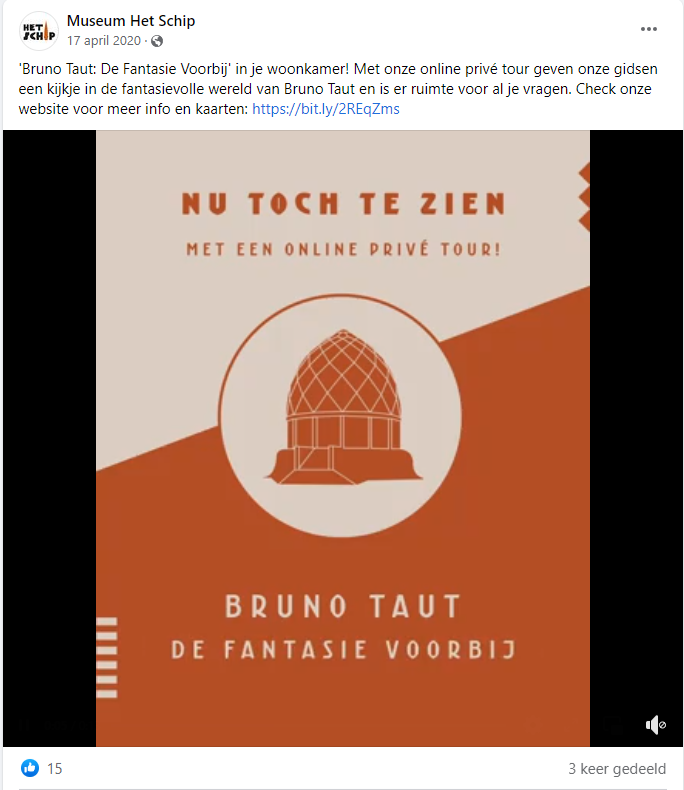
To schedule a tour, the aspiring visitor would go to the website of the museum. There they could buy a ticket (single or double) and after the purchase a guide would get in contact with them to schedule a tour based on the availability of the visitor as well as the guide’s. Due to the nature of the employment of the guides, the process was fairly risk-free: a guide only had to be on site when he/she had an appointment scheduled.
Unlike a lot of other lockdown initiatives by cultural institutions, this initiative was a paid service. For a private tour you paid €15,- and a two-person tour cost €25,-. The museum described the paywall as necessary and a matter of principal – the lockdown hit everyone hard and a lot of the costs museums had still had to be paid. This may have contributed to the smaller amount of users of the initiative, but the museum stands behind their decision and wishes that, in the event of another lockdown or something similar, other institutions will realise the value of their work and reflect that in their admission fees.2
So much money was already invested in the Bruno Taut project that Museum Het Schip barely had money left to invest in a PR campaign for the initiative. Luckily, the PR campaign for the exhibition was already rolling and they had some press coverage come out, which helped gain them visibility.
Impact
The museum gained a new perspective
Like a lot of cultural institutions, Museum Het Schip has had a hard time during the lockdown. The Coronacrisis hit them during a time when they were in the middle of a professionalization process, in which the museum aims to be a larger player in the world of museums in Amsterdam. Due to insufficient funding and a smaller workforce they had a lot working against them, but their creativity and hard work helped them keep their head above the water and strengthened their existing relationship with their audience. The biggest thing they have learned from this crisis is a new perspective on the opportunities that lay in the digital world – Business office staff member Margriet Roelandse reported their thinking has been altered to the point they consider streaming and other online services as an extension of their concept. They have seen how an intimate environment is still possible online, and will definitely incorporate it in future endeavours.
The public held on…
In total, the digital tour has drawn an audience of 54 people, mainly those who would have visited the museum when it would have been open. They also provided two other online activities during the lockdown: a charcoal drawing workshop and weekly lectures about Bruno Taut. The charcoal workshop has sold 12 tickets, the lectures drew 54 people. Even though these numbers are small the museum considers them a success – the digital tour was a success with everyone that partook.3,
…and stepped up.
The crisis left the museum with a shortage of money, but their public has been a great help by visiting the online initiatives or simply donating money to the museum. Their participation and love on social media in turn helped the struggling staff get recognition for their hard work and creativity – truly a network in action.
And now?
When being asked if Museum Het Schip would continue with the format they offered during the lockdown they answered that, for now, there is no time or manpower to further develop the initiative. They hope that in the future there will be – the museum has been planning on working on attracting a more broad selection of target groups such as lonely elderly people, more local residents and people with Alzheimer. The museum sees their lockdown initiative as a possible tool that could contribute to the accessibility of their building and collection that could help with the aforementioned future target audience.
Interpretation
One of the questions that undoubtedly came across all museum staff’s mind in March 2020 is how they were going to upkeep the relationship with their audience without the presence of a physical meeting place. Museum Het Schip has answered that question loud and clear by not only offering a cultural escape but with it maintaining their personal touch while providing it. Though on a small scale, their impact on the participating audience has been greater than a mere online exhibit, by adding to the need for social interactions and higher individual understanding.
References
- Museum Het Schip, Bestuursverslag en jaarrekening 2020, (version May 28th 2021).
- Museum Het Schip, “Bruno Taut, Beyond the Fantasy”, (version May 7th 2020).
- Museum Het Schip, “Museum Het Schip”, (version October 26th 2021).
- Roelandse, M., staff member Bedrijfsbureau Museum Het Schip, interviewed by N. Kaiser on October 25th, 2021
Author
M. Roelandse, staff member Bedrijfsbureau Museum Het Schip, interviewed by N. Kaiser on October 25th, 2021 ↩
M. Roelandse, staff member Bedrijfsbureau Museum Het Schip, interviewed by N. Kaiser on October 25th, 2021. ↩
M. Roelandse, staff member Bedrijfsbureau Museum Het Schip, interviewed by N. Kaiser on October 25th, 2021 ↩


